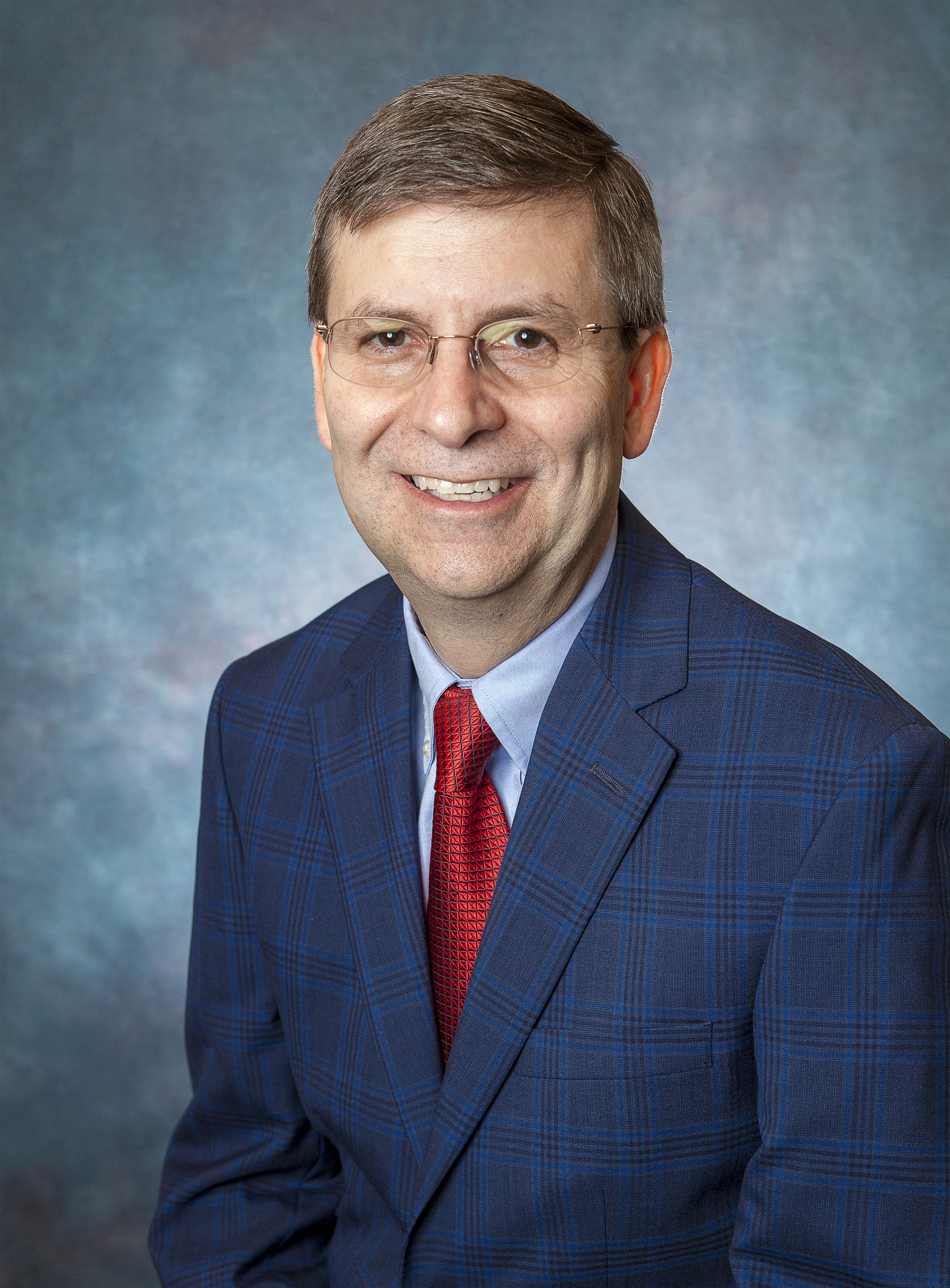IEEE Talks Transportation Electrification: Aviation Propulsion
Collaborative efforts between IEEE and AIAA highlights activities and explores likely scenarios for electrified aviation propulsion architectures Dr. Marty Bradley, chair of the AIAA Aircraft Electrified Propulsion and Power Working Group and Technical Fellow for The Boeing Company, works in the Boeing Commercial Airplanes Advanced Concepts Group in Long Beach, California. He has been the leader for a variety of projects related to advanced concepts and technologies, aviation environmental life cycle analysis, and propulsion integration for advanced technologies, and was the Principal Investigator for the NASA funded SUGAR study looking at advanced technologies for future commercial aircraft, including the hybrid electric SUGAR Volt.
Dr. Marty Bradley, chair of the AIAA Aircraft Electrified Propulsion and Power Working Group and Technical Fellow for The Boeing Company, works in the Boeing Commercial Airplanes Advanced Concepts Group in Long Beach, California. He has been the leader for a variety of projects related to advanced concepts and technologies, aviation environmental life cycle analysis, and propulsion integration for advanced technologies, and was the Principal Investigator for the NASA funded SUGAR study looking at advanced technologies for future commercial aircraft, including the hybrid electric SUGAR Volt.  Dr. Kiruba Haran, IEEE Fellow, Steering Committee Member of the IEEE Transportation Electrification Community, and the former chair of the Electric Machinery Committee of IEEE-PES, holds a BS in Electrical Engineering from OAU, Nigeria and a PhD in Electric Power Engineering from RPI, Troy, NY. He is currently an Associate Professor in Electrical Engineering at UIUC. Prior to this, Dr. Haran was at GE for 13 years, and led the research group that develops advanced electrical machine technology for all of GE's industrial businesses.
Dr. Kiruba Haran, IEEE Fellow, Steering Committee Member of the IEEE Transportation Electrification Community, and the former chair of the Electric Machinery Committee of IEEE-PES, holds a BS in Electrical Engineering from OAU, Nigeria and a PhD in Electric Power Engineering from RPI, Troy, NY. He is currently an Associate Professor in Electrical Engineering at UIUC. Prior to this, Dr. Haran was at GE for 13 years, and led the research group that develops advanced electrical machine technology for all of GE's industrial businesses.
What has spurred interest in electrified aviation propulsion systems for large commercial transport aircrafts and when did the aviation industry begin to seriously explore opportunities in this area?
Marty Bradley: We've been studying the idea of electrified aircraft propulsion since about 2006, and we really began with an environmental focus, such as exploring the possibilities for environmental benefits to electrifying propulsion through the use of more electrical energy and burning less fuel. That's one of the areas. Towards that, we've identified potential cost advantages to pursuing electrified propulsion because of the relative cost of electrical energy compared to fossil fuels. Other areas of potential benefit include the significant possibility to reduce emissions when electric airplanes are charged with sustainable sources, as well as lowering the sound footprint of airplanes in and around airports.
What are some of the electrified propulsion architectures in play?
Marty Bradley: We've studied a whole range, and so we have essentially multiple architectures. We have pure electric, where batteries drive electric motors, and we have different types of hybrid electric propulsion, with either series hybrids or parallel hybrids, analogous to what exists in electrified cars. So, we study the different architectures for different applications, and there are all kinds of scenarios in play where people are looking at a wide variety of different ways of doing electric architecture. It’s really dependent on a range of different aircraft missions and the associated requirements. For example, there’s a need to explore a lot of different scenarios, and then understand which ones are right for, say, an air taxi that has a short range and vertical takeoff-and-landing requirements versus what would be more applicable for a general aviation airplane or what’s best for a longer-range commercial airplane.
Who are some of the key players in electrified propulsion?
Kiruba Haran: In the U.S., the government agency that's been sponsoring a lot of this work is NASA, and its AATT program specifically, but more broadly the aeronautics piece of NASA. In fact, all of the major aviation engine companies are publicly working on related projects.
Marty Bradley: In addition, there are more than 100 electrified aircraft concepts currently being pursued, and more than 60 percent of the concepts are coming from nontraditional aerospace companies. What’s more, Boeing and the traditional airframers all have projects underway, so it’s clear there are a lot of people working in the space to develop different levels of concepts for electrified aircraft.
How are AIAA and IEEE collaborating on electrified aviation propulsion initiatives?
Kiruba Haran: From IEEE's standpoint, the Transportation Electrification Committee (TEC) has made it a lot easier to set up this collaboration with AIAA. As we work to develop these types of cooperative workshops, the IEEE TEC provides a common interface into the Institute and has the ability to tap directly into the five or six different societies within the IEEE that have elements connected to electrification as it relates to the aviation industry as a whole.
Marty Bradley: The AIAA had a workshop in July 2016 with the idea to coordinate the different activities going on within the AIAA and a number of different AIAA technical committees had some involvement in electric propulsion but no coordination. Kiruba was one of our invited speakers, and shortly thereafter we formed the AIAA Aircraft Electrified Propulsion and Power Working Group in January of 2017, with a call of action to foster greater collaboration with IEEE. As a result, we began work to coordinate conferences and develop content for electrified aircraft propulsion. These efforts led to our jointly developed IEEE Electric Aircraft Technologies Symposium (EATS) in the summer of 2018—a two-day event held in Cincinnati and that helped solidify ongoing cooperation between the AIAA and the IEEE. We look forward to even greater participation next year.
What are some of the immediate benefits you’ve seen from AIAA/IEEE collaboration?
Kiruba Haran: One of the terms heard today is the "more-electric aircraft". So just to clarify, there's been a gradual increase in the amount of electric power in airplanes, going back decades, but all those are the auxiliary systems, and the electrical community that works on that type of electrification has been reasonably well engaged. On the other hand, the idea of electrifying the propulsion system is a fairly new concept. One of the things we quickly found out is that it's hard to make the propulsion system discrete and separate from the airplane design because it's really all a unified system of components, with controls, thermal management, protection and redundancy handled at the vehicle level, and there's potentially multiple power generation units that are networked and maybe feed more than one propulsion unit. To address that reality, you face an increasing need to have the component people talk to the airplane folks and that is something the AIAA and the IEEE are focused on achieving.
Marty Bradley: In that same vein, what you find is that there are electric people that go to the aerospace conferences, but not that many. One hurdle is that AIAA is focused on a lot of aerospace, aeronautics, aerodynamics, performance, and so on, where we've had a lot of people wanting to design airplanes but lacking skills in the area of modeling electrical components, and then also needing to understand how to include electrified components such as the generators, the motors, the batteries and the power distribution systems. We felt the need to reach out to the IEEE to bring in that expertise in order to get our aerospace people trained in the details of how you do the electric components. Conversely, I think IEEE was probably in the same place. They had people that were motor experts, component experts, but they didn't have the background in aircraft systems where you are considering the entire airplane. So, bringing these two groups together area has seen immediate benefit for both organizations.


